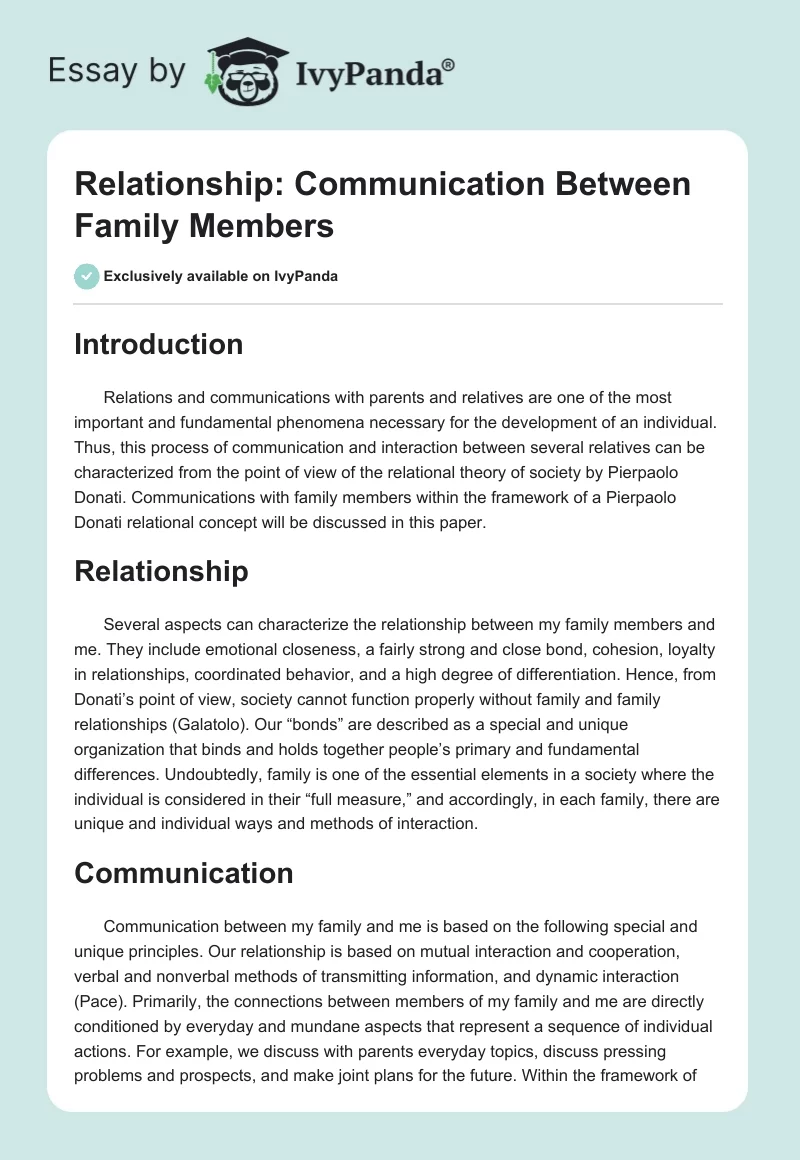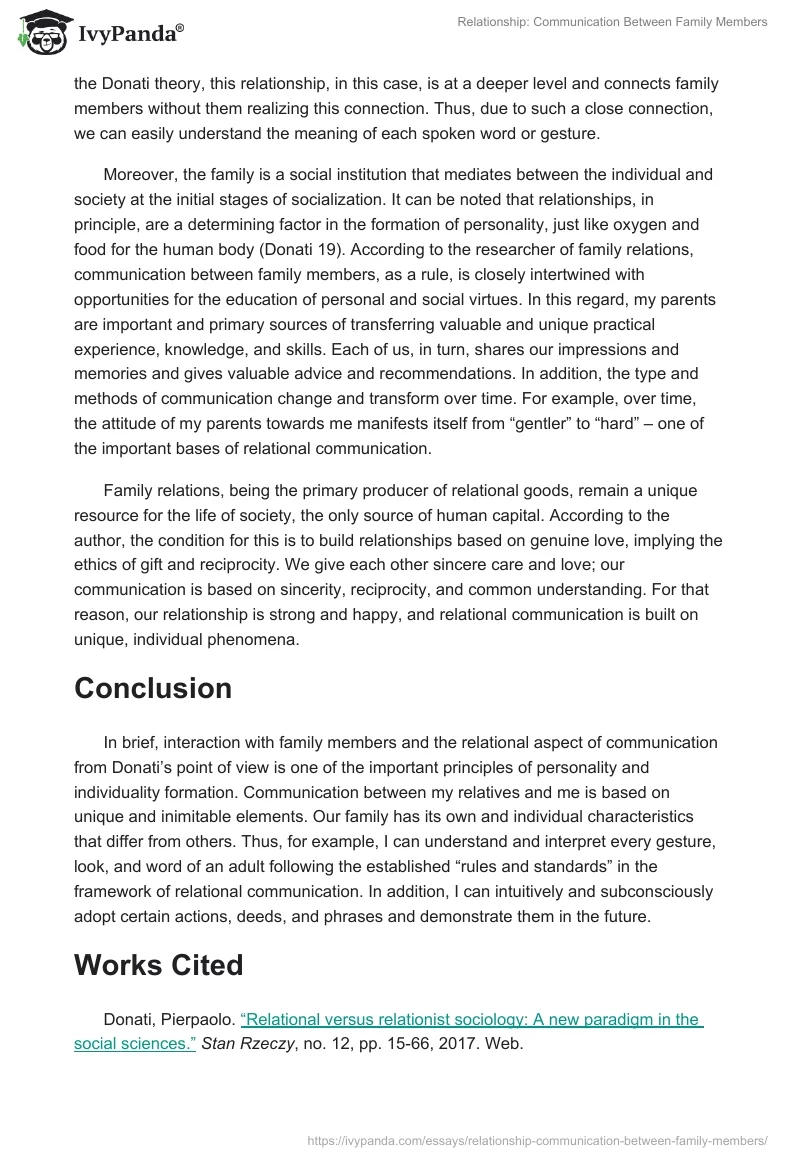Introduction
Relations and communications with parents and relatives are one of the most important and fundamental phenomena necessary for the development of an individual. Thus, this process of communication and interaction between several relatives can be characterized from the point of view of the relational theory of society by Pierpaolo Donati. Communications with family members within the framework of a Pierpaolo Donati relational concept will be discussed in this paper.
Relationship
Several aspects can characterize the relationship between my family members and me. They include emotional closeness, a fairly strong and close bond, cohesion, loyalty in relationships, coordinated behavior, and a high degree of differentiation. Hence, from Donati’s point of view, society cannot function properly without family and family relationships (Galatolo). Our “bonds” are described as a special and unique organization that binds and holds together people’s primary and fundamental differences. Undoubtedly, family is one of the essential elements in a society where the individual is considered in their “full measure,” and accordingly, in each family, there are unique and individual ways and methods of interaction.
Communication
Communication between my family and me is based on the following special and unique principles. Our relationship is based on mutual interaction and cooperation, verbal and nonverbal methods of transmitting information, and dynamic interaction (Pace). Primarily, the connections between members of my family and me are directly conditioned by everyday and mundane aspects that represent a sequence of individual actions. For example, we discuss with parents everyday topics, discuss pressing problems and prospects, and make joint plans for the future. Within the framework of the Donati theory, this relationship, in this case, is at a deeper level and connects family members without them realizing this connection. Thus, due to such a close connection, we can easily understand the meaning of each spoken word or gesture.
Moreover, the family is a social institution that mediates between the individual and society at the initial stages of socialization. It can be noted that relationships, in principle, are a determining factor in the formation of personality, just like oxygen and food for the human body (Donati 19). According to the researcher of family relations, communication between family members, as a rule, is closely intertwined with opportunities for the education of personal and social virtues. In this regard, my parents are important and primary sources of transferring valuable and unique practical experience, knowledge, and skills. Each of us, in turn, shares our impressions and memories and gives valuable advice and recommendations. In addition, the type and methods of communication change and transform over time. For example, over time, the attitude of my parents towards me manifests itself from “gentler” to “hard” – one of the important bases of relational communication.
Family relations, being the primary producer of relational goods, remain a unique resource for the life of society, the only source of human capital. According to the author, the condition for this is to build relationships based on genuine love, implying the ethics of gift and reciprocity. We give each other sincere care and love; our communication is based on sincerity, reciprocity, and common understanding. For that reason, our relationship is strong and happy, and relational communication is built on unique, individual phenomena.
Conclusion
In brief, interaction with family members and the relational aspect of communication from Donati’s point of view is one of the important principles of personality and individuality formation. Communication between my relatives and me is based on unique and inimitable elements. Our family has its own and individual characteristics that differ from others. Thus, for example, I can understand and interpret every gesture, look, and word of an adult following the established “rules and standards” in the framework of relational communication. In addition, I can intuitively and subconsciously adopt certain actions, deeds, and phrases and demonstrate them in the future.
Works Cited
Donati, Pierpaolo. “Relational versus relationist sociology: A new paradigm in the social sciences.”Stan Rzeczy, no. 12, pp. 15-66, 2017. Web.
Galatolo, Cecilia. “The Family, the Genome of Society.”Family and Media, 2017. Web.
Pace, Rachael. “What is Relational Communication? Principals and Theory Explained.”Marriage, 2020. Web.


